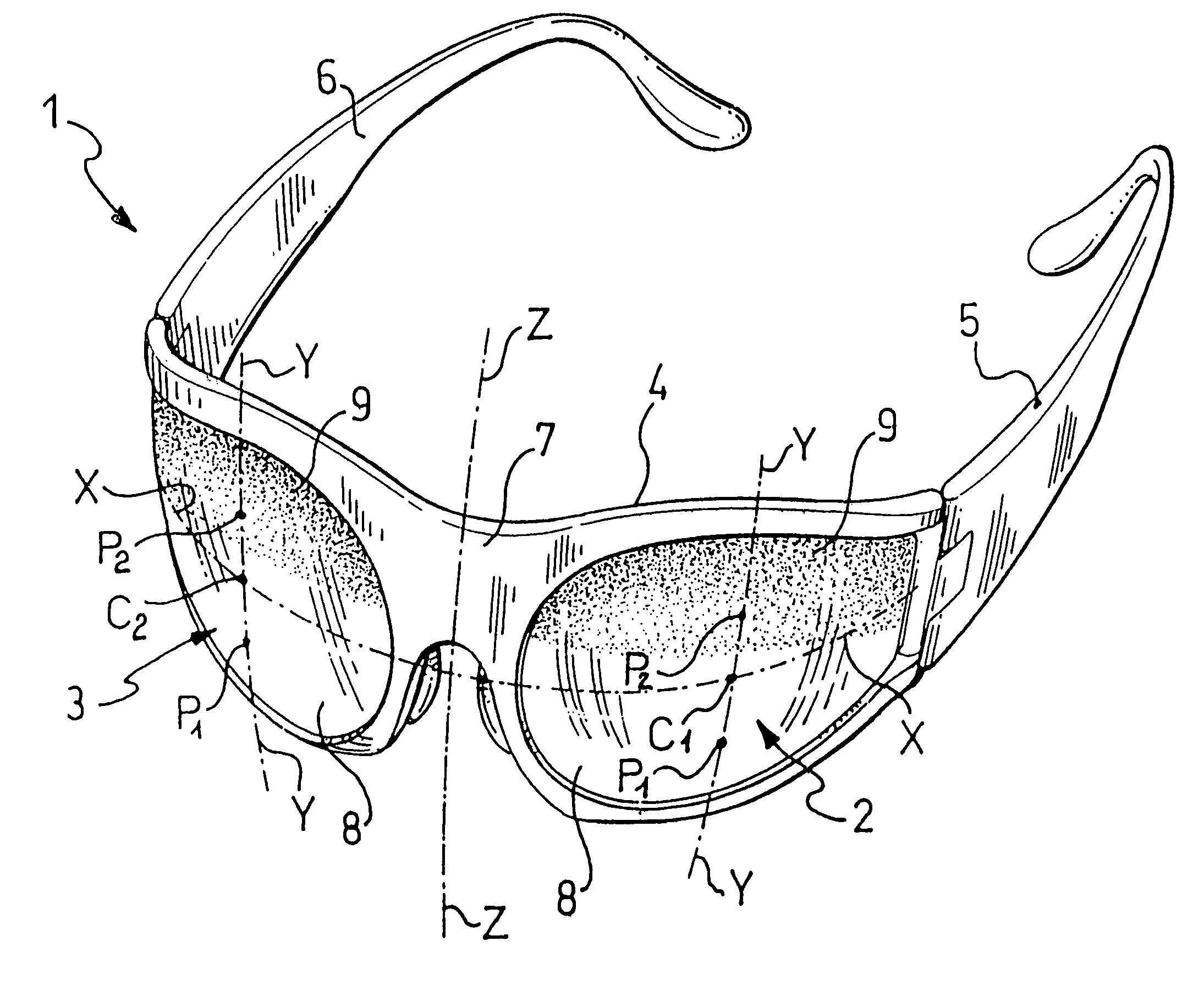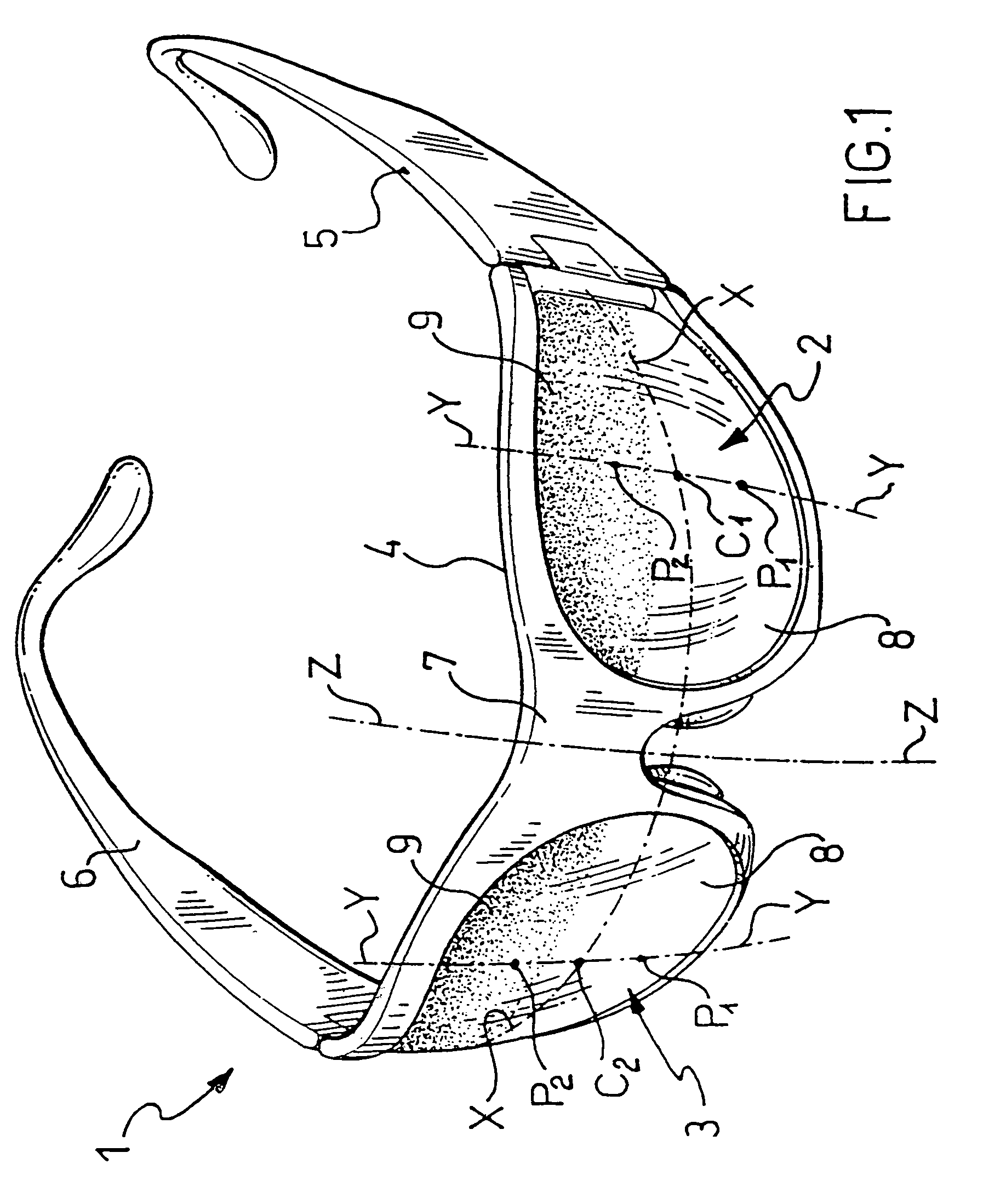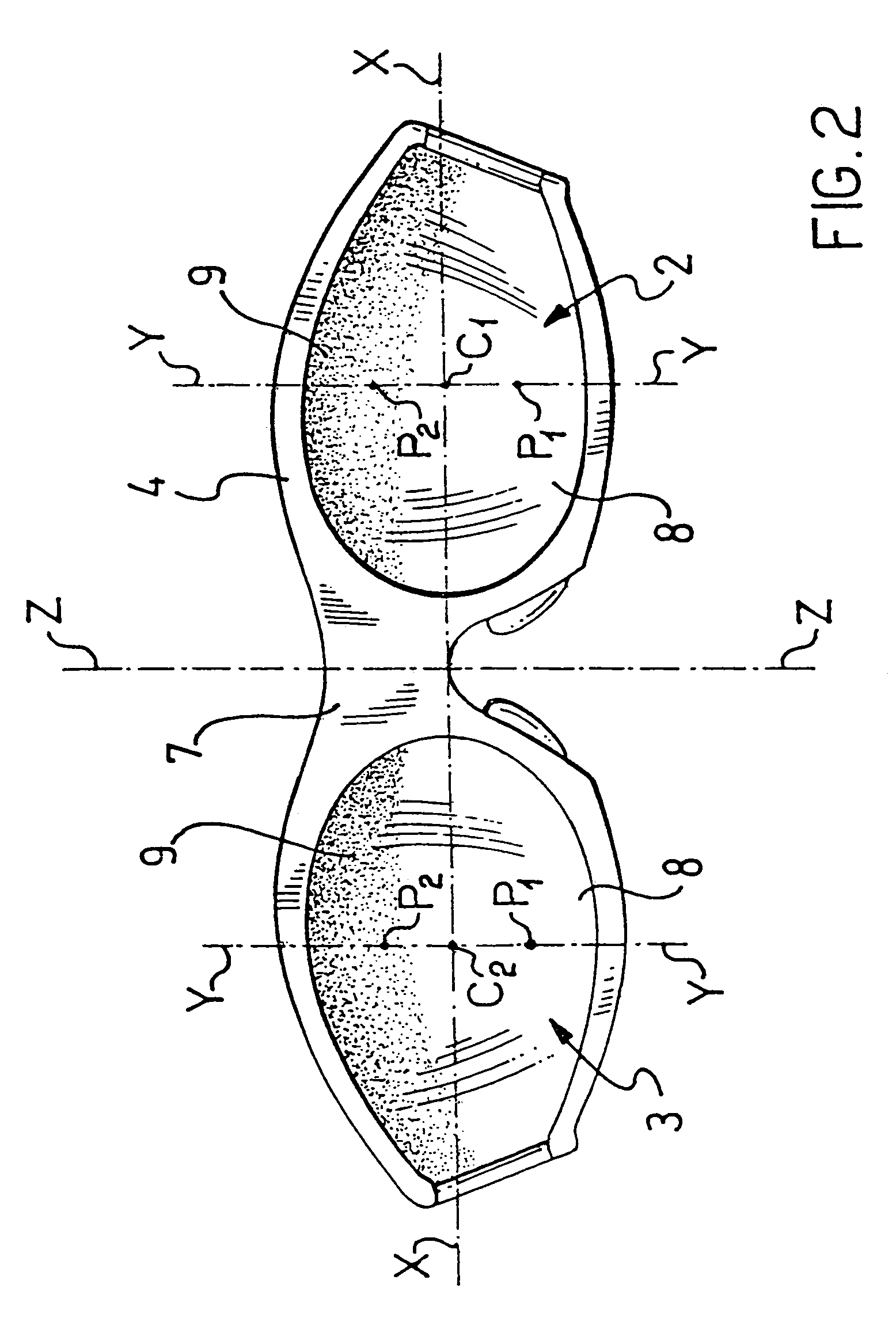Polarized optical element having differentiated transmittance properties for use in eye-protecting devices
a technology of transmittance properties and optical elements, applied in the field of polarized transparent elements, can solve the problems of conventional non-polarized optical elements, sunglass lenses, and insufficiently reducing the effects of glare, and achieve the effect of reducing glare and effective reducing visual discomfor
- Summary
- Abstract
- Description
- Claims
- Application Information
AI Technical Summary
Benefits of technology
Problems solved by technology
Method used
Image
Examples
example 1
Invention
[0192]A polarized lens made of diethylenglycol-bis-allyl-carbonate (CR39®) was obtained by means of a casting method comprising placing a polarizing disc made of a polyvinylalcohol film 30 microns thick (Kurarai, J P) preformed to have a substantially spherical surface in a cavity formed by molds having concave and convex inner surfaces. A solution of transparent polymerizable diethylenglycol-bis-allyl-carbonate monomer including 3% of cross-linking catalyst (diisopropyl peroxy dicarbonate) and 0.3% of UV absorber Uvinul® 3049 (BASF) was then poured on opposite sides of the polarizing film and then polymerized. The polymerization cycle lasted 20 hours and the temperature was adjusted between 40° and 80° C. according to polymerization procedures well known to those skilled in the art.
[0193]The polarizing disk has the following values of the factor of luminous transmittance and the following colorimetric details:
[0194]factor of luminous transmittance (τν)=33%,
[0195]color: Gre...
example 2
Invention
[0208]A polarized CR39® lens was manufactured in the same way as of Example 1 except for the fact that the dyeing conditions were set so as to obtain different spectral characteristics in the upper and lower portions of the optical element.
[0209]The curve of spectral transmittance obtained is shown in FIG. 5. In FIG. 5, curve A graphically shows the spectral transmittance in the lower portion of the optical element as measured at a reference point located at 10 mm below the median line, curve B graphically shows the spectral transmittance at the median line and curve C graphically shows the spectral transmittance in the upper portion of the optical element as measured at a reference point located at 10 mm above the median line.
[0210]All the reference points were aligned along the meridian line of the lens.
[0211]The values of the factor of luminous transmittance and the colorimetric details were the following:
[0212]Upper portion (UP): τν=8%, color: Brown, L*=33, a*=6.2, b*=1...
example 3
Invention
[0215]A polarized CR39® lens was manufactured in the same way as of Example 1 except for the fact that the dyeing conditions were set so as to obtain different spectral characteristics in the upper and lower portions of the optical element.
[0216]The curve of spectral transmittance obtained is shown in FIG. 6. In FIG. 6, curve A graphically shows the spectral transmittance in the lower portion of the optical element as measured at a reference point located at 10 mm below the median line, curve B graphically shows the spectral transmittance at the median line and curve C graphically shows the spectral transmittance in the upper portion of the optical element as measured at a reference point located at 10 mm above the median line.
[0217]All the reference points were aligned along the meridian line of the lens.
[0218]The values of the factor of luminous transmittance and the calorimetric details were the following:
[0219]Upper portion (UP): τν=12%, color: Green, L*=41, a*=−10.2, b...
PUM
 Login to View More
Login to View More Abstract
Description
Claims
Application Information
 Login to View More
Login to View More - R&D
- Intellectual Property
- Life Sciences
- Materials
- Tech Scout
- Unparalleled Data Quality
- Higher Quality Content
- 60% Fewer Hallucinations
Browse by: Latest US Patents, China's latest patents, Technical Efficacy Thesaurus, Application Domain, Technology Topic, Popular Technical Reports.
© 2025 PatSnap. All rights reserved.Legal|Privacy policy|Modern Slavery Act Transparency Statement|Sitemap|About US| Contact US: help@patsnap.com



